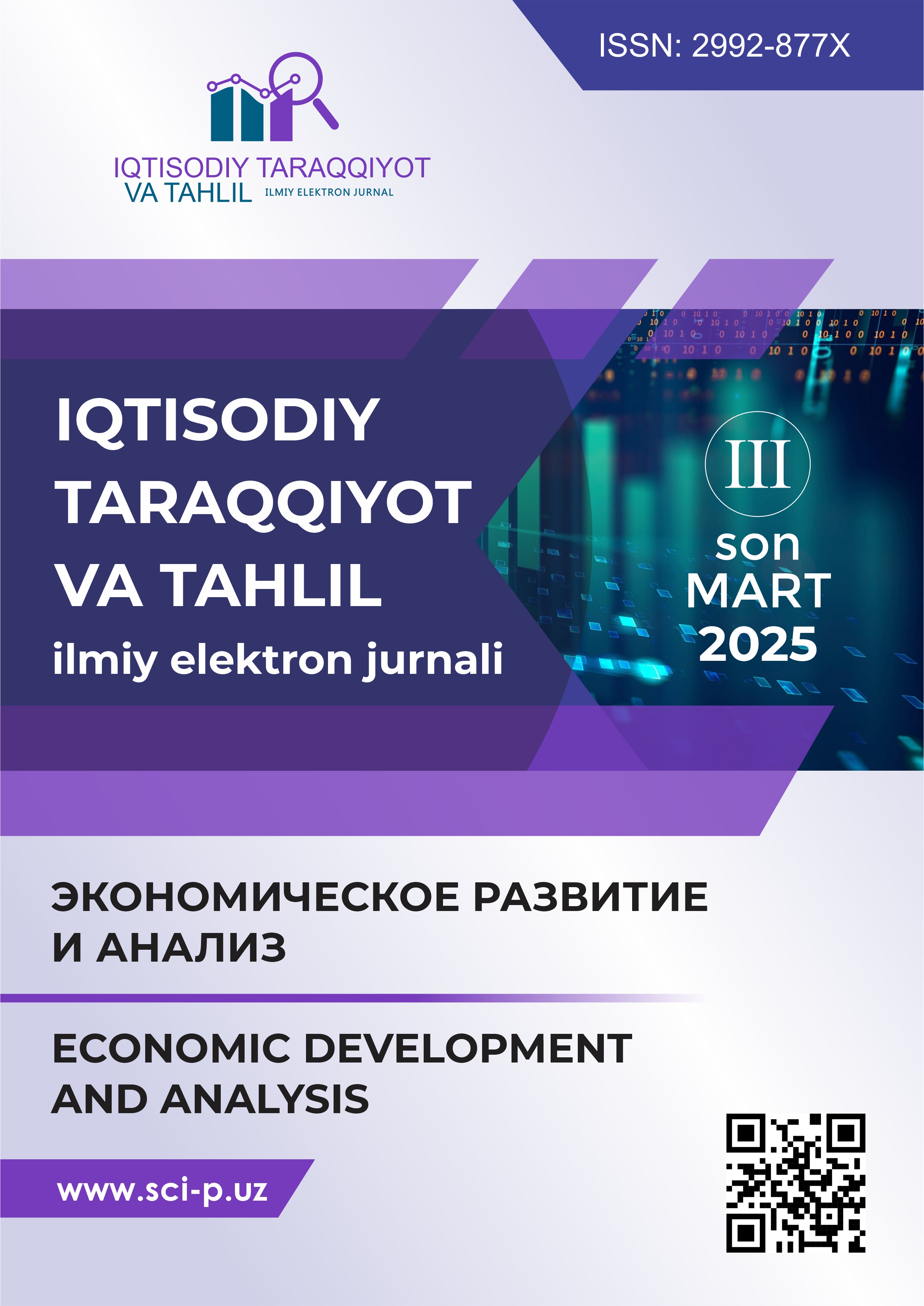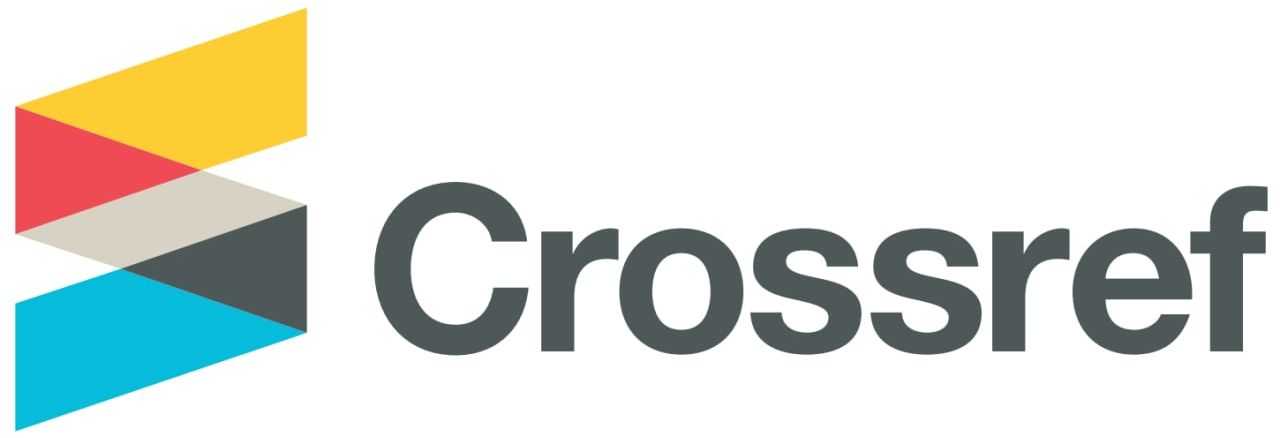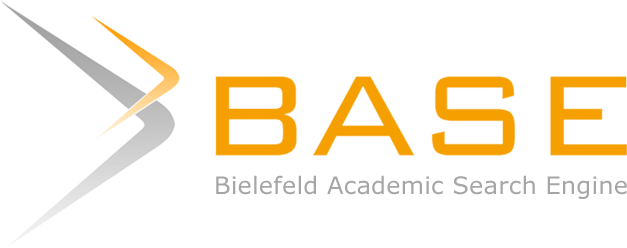INNOVATSION FAOLIYATNI QO‘LLAB-QUVVATLASH XUSUSIYATLARI: XORIJIY TAJRIBA VA O‘ZBEKISTON UCHUN ISTIQBOLLAR
DOI:
https://doi.org/10.60078/2992-877X-2025-vol3-iss3-pp124-132Annotasiya
Zamonaviy global iqtisodiyot sharoitida O‘zbekiston Respublikasida iqtisodiyotning asosiy tarmoqlari, ijtimoiy soha va boshqa faoliyat yo‘nalishlariga ilg‘or innovatsion texnologiyalarni tezkor joriy etish barqaror va dinamik rivojlanishni ta’minlash uchun muhim omil sifatida namoyon bo‘lmoqda. Mamlakatning ijtimoiy va davlat hayotidagi barcha jabhalarining tezkor o‘zgarishi olib borilayotgan islohotlarni eng so‘nggi innovatsion g‘oyalar, ishlanmalar va texnologik yechimlarga asoslangan holda tizimli qo‘llab-quvvatlashni talab qilmoqda. Ushbu sa’y-harakatlar O‘zbekistonni raqamlashtirish va bilimlarga asoslangan iqtisodiyotga o‘tish jarayonida jahon sivilizatsiyasi yetakchilari qatoriga olib chiqishga qaratilgan sifatli o‘tishni ta’minlashga yo‘naltirilgan. Ushbu mavzuning yuqori dolzarbligi xalqaro tajribani O‘zbekistonning milliy sharoitlariga moslashtirish va samarali innovatsion ekotizimni shakllantirish zaruratidan kelib chiqadi. Mazkur tadqiqotda iqtisodiy jihatdan rivojlangan va dinamik rivojlanayotgan mamlakatlarda innovatsion faoliyatni davlat tomonidan qo‘llab-quvvatlashning turli yondashuvlari tahlil qilinadi. Ushbu tahlilga asoslanib va O‘zbekiston milliy iqtisodiyoti hamda hozirgi ijtimoiy-iqtisodiy muammolarni hisobga olgan holda, mualliflar tomonidan O‘zbekiston Respublikasida innovatsion jarayonlarni davlat tomonidan rag‘batlantirish mexanizmlarini takomillashtirish bo‘yicha takliflar ishlab chiqilgan. Taklif qilingan yo‘nalishlar mamlakatning global miqyosdagi raqobatbardoshligini mustahkamlashga qaratilgan.
Kalit so‘zlar:
innovatsiya innovatsion ekotizim texnologik ishlanmalar davlat tartibga solishi davlat tashabbuslari kichik innovatsion korxonalar tadqiqot va ishlanmalarBibliografik manbalar
Abdullaev, A., et al. (2020). The issue of a competitive national innovative system formation in Uzbekistan. In E3S Web of Conferences (Vol. 159, p. 04024). EDP Sciences.
Abdurakhmanova, G., Usmanov, F., & Rakhimov, K. (2022). Technological innovation and economic growth in Uzbekistan: Challenges and opportunities. Journal of Innovation Economics, 38(2), 123–140.
Acemoglu, D., & Robinson, J. A. (2021). Culture, institutions and social equilibria: A framework (No. w28832). National Bureau of Economic Research.
Alimova, R., & Rasuleva, A. (2024). Digital transformation and industrial innovation in Uzbekistan. Central Asian Economic Review, 15(1), 23–39.
Audretsch, D. B., & Belitski, M. (2021). Frank Knight, uncertainty and knowledge spillover entrepreneurship. Journal of Institutional Economics, 17(6), 1005-1031.
Azimov, B. F. (2025). Innovatsiyalarni qo‘llab-quvvatlash va rivojlantirishda texnoparklarning evolyutsiyasi. Analysis of modern science and innovation, 1(5), 45-54.
Bloom, N., Van Reenen, J., & Williams, H. (2020). A toolkit of policies to promote innovation. Journal of Economic Perspectives, 33(3), 163–184. https://doi.org/10.1257/jep.33.3.163
Drucker, P. F. (1985). Innovation and entrepreneurship. Harper & Row.
Fagerberg, J., Lundvall, B. Å., & Srholec, M. (2018). Global value chains, national innovation systems and economic development. The European Journal of Development Research, 30(3), 533-556.
Ghosh, P. K., & Dinda, S. (2022). Revisited the relationship between economic growth and transport infrastructure in India: an empirical study. The Indian Economic Journal, 70(1), 34-52.
Hassink, R., & Gong, H. (2021). Six critical questions about smart specialization. In Rethinking Clusters (pp. 171-187). Routledge.
Hovdan, B., Czarnitzki, D., & Angelino, P. (2023). R&D tax credits: a review and an econometric study on efficient policy mixes. Handbook of Innovation and Regulation, 318-339.
Khalilova, L.R., & Karimova, M.A. (2024). The change in digital technology: revolutionising society and industries. Central Asian Journal of Multidisciplinary Research and Management Studies, 1(2), 238-241.
Khаmdаmov, S. J. (2024). The role of technology and innovation in driving economic growth in Uzbekistan. American Journal of Modern World Sciences, 1(1), 124-134.
Kurpayanidi, K. (2021). National innovation system as a key factor in the sustainable development of the economy of Uzbekistan. In E3S Web of Conferences (Vol. 258, p. 05026). EDP Sciences.
Kurpayanidi, K. (2023). Innovation and competitiveness: Modelling future economic growth through the national innovation system of Uzbekistan. In E3S Web of Conferences (Vol. 460, p. 03013). EDP Sciences.
Kurpayanidi, K. I. (2022). Institutional conditions for the development of entrepreneurship in the context of the transformation of the national economy. Economic innovations, 24(3 (84)), 67-76.
Lavarello, P. J., Robert, V., & Vázquez, D. (2023). Global value chains and national innovation systems: a strained integration. Revista de Economia Contemporânea, 27, e232706.
Lerner, J., & Nanda, R. (2020). Venture capital’s role in financing innovation: What we know and how much we still need to learn. Journal of Economic Perspectives, 34(3), 237-261.
Lis, A. M., Kowalski, A. M., & Mackiewicz, M. (2021). Smart specialization through cluster policy: Evidence from Poland and Germany. In Partnerships for regional innovation and development (pp. 218-245). Routledge.
Maliphol, S., Aridi, A., Lee, J. D., & Woodson, T. (2024). Innovation policy responses to address vulnerabilities of national innovation systems: long-lasting impacts of COVID-19. Science and Public Policy, 51(6), 1191-1194.
OECD. (2023). Innovation and economic resilience: Global trends 2023. OECD Publishing. https://doi.org/10.1787/eco_resilience_2023
OECD. (2023). OECD science, technology and innovation outlook 2023. OECD Publishing. https://doi.org/10.1787/sti_outlook-2023-en
Porter, M. E., & Heppelmann, J. E. (2015). How smart, connected products are transforming companies. Harvard business review, 93(10), 96-114.
Romer, P. M. (1990). Endogenous technological change. Journal of Political Economy, 98(5), S71–S102. https://doi.org/10.1086/261725
Schumpeter, J. A. (1934). The theory of economic development. Harvard University Press.
Schwab, K., & Zahidi, S. (2023). The global competitiveness report 2023. World Economic Forum. https://www.weforum.org/reports/global-competitiveness-report-2023
Sodiqova, N. T., & Qudratova, G. M. (2024). Tashkilotning innovatsion faoliyati samaraligini baholash. Studying the progress of science and its shortcomings, 1(2), 286-294.
UNCTAD. (2023). Technology and innovation report 2023. United Nations Conference on Trade and Development. https://unctad.org/tir2023
UNESCO Institute for Statistics. (2024). Global R&D expenditure rankings 2024. UNESCO. http://uis.unesco.org/en/statistics
WIPO. (2023). World intellectual property report 2023. World Intellectual Property Organization. https://www.wipo.int/publications/en/details.jsp?id=4567
World Bank. (2024). Digital development and innovation ecosystems: A global outlook. World Bank Publications. https://doi.org/10.1596/978-1-4648-2045-8
Абдуллаева, З. И. (2024). Инновационные и социальные технологии в сфере услуг. социально-экономические аспекты. Miasto Przyszłości, 46, 66-73.
Аналитическая информация (n.d.) Аналитическая информация о мерах государственной поддержки легкой промышленности в государствах-членах европейского союза (ЕС) и государствах Юго-восточной Азии. Электронный ресурс. Режим доступа. URL: https://eec.eaeunion.org/upload/medialibrary/796/Analiticheskaya-zapiska-po-gos-podderzhke-ES-legkaya-promyshlennost.pdf
Икрамов М.А., Асаул А.Н. (2024). Предпринимательская идея как предвестник новаторства. International Scientific and Practical Conference: Actual tasks of the effective use of modern marketing concepts in the development of the national economy. Available from: https://www.researchgate.net/publication/375221432_International_ Scientific_and_Practical_Conference_actual_tasks_of_the_effective_use_of_modern_marketing_concepts_in_the_development_of_the_national_economy.
Турсунов, Б.О. (2018). Современные методы управления загрузкой производственных мощностей на текстильных предприятиях. Экономика и инновационные технологии, 32 .
Yuklashlar
Nashr qilingan
Qanday qilib iqtibos keltirish kerak
Nashr
Bo'lim
Litsenziya

Ushbu ish Creative Commons Attribution 4.0 Worldwide.










